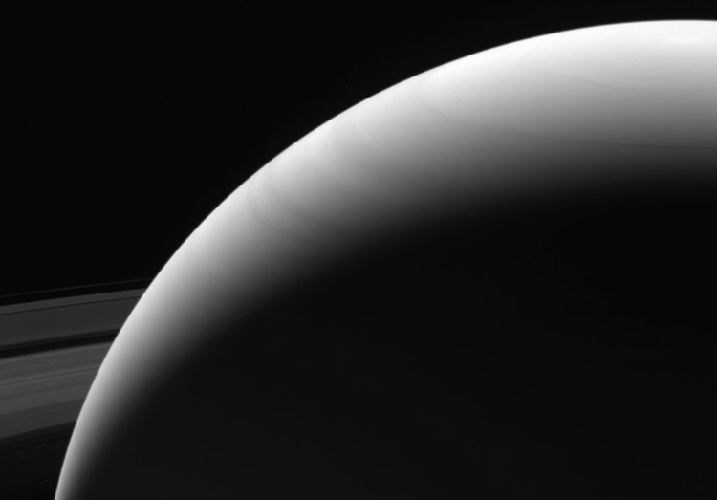Over 10 years ago, I wrote: "To our ancestors, the world was a special place. It was unique. The stars above were points of light or the spirits of ancestors or the leavings of the gods. The wanderers - the planets - were mystical creatures that could influence the happenings on Earth. The sun was a giant fire in the heavens put in place by the gods to provide warmth and light."
It was the introduction to an article about the spacecraft Cassini and its mission to Saturn.
Launched in 1997, the mission finally came to an end last weekend as the Cassini spacecraft was deliberately plunged into Saturn's atmosphere.
The grand finale to the 20-year mission provided data right up to the end but it also ensured any contamination which might have resided on the spacecraft would be destroyed as it burned up in the atmosphere.
In the course of its mission, the spacecraft beamed back thousands and thousands of images and gigabyte after gigabyte of data about the ringed planet. The data has resulted in over 3,000 scientific papers exploring everything from the composition and formation of the planetary rings to each of the 61 moons to the weather on the planet itself.
It is hard to summarize such a mission. Scientists will be exploring the data for years to come and there will be new surprises still in store. For example, the data from the last 22 plunges brought the spacecraft closer to the gas giant than any previous orbit. Its instruments kept beaming back data which may answer one of the more perplexing mysteries about Saturn - how long is its day?
The planet is a gas giant and does not have the discernible landmarks observable on the inner rocky planets such Mars and Earth. Determining its rotational period has been difficult, even within the confines of the Saturnian system. But the final pieces of data may help solve this puzzle and provide an answer to an equally perplexing question - what is at the core of the gas giant?
Is Saturn really a failed dwarf star? Or does it have a rocky core with a really extensive atmosphere? During the last few plunges past the planet, astronomers hope to gather enough data to answer these questions.
What else did the mission reveal?
Very early on, on Dec. 24, 2004, the Huygens probe was released to plunge into the atmosphere of Titan on Jan. 14, 2005. During its 2.5 hour descent and 70 minutes of life on the surface of Saturn's largest moon, it revealed a world beyond our imaginations.
The moon's atmosphere is mostly nitrogen and has a surface pressure slightly greater than ours.
There are clouds of methane and lakes of hydrocarbons. Complex chemistry generating massive molecules is occurring. In many ways, the surface of Titan is a giant version of the Urey-Miller experiment. It is possible the constituents of living matter are being generated on the surface of the moon. The pre-biotic chemistry is complex.
Perhaps more intriguing was the small icy moon Enceladus.
During one of its many flybys, Cassini record giant jets of liquid water spewing from the moon's southern pole. Upon travelling through these plumes, the mass spectrometer onboard was definitely able to confirm the plumes were water but laced with salts and other compounds indicative of possible life.
Present conjecture has Enceladus coated in a layer of ice but with a viable liquid ocean beneath the surface. Gravitational interactions with the planet result in the release of water and the remodeling of the southern pole but there is still enough mass to suggest a sizeable subterranean ocean.
In some ways, Enceladus is similar to the moon Europa orbiting Jupiter and certainly a prime candidate for life elsewhere in the solar system.
The mission studied the rings around the planet and found them to be much more active than previously thought. It is clear there is interaction between the rings and moons. Indeed, images of a moon "propellering" its way through the rings suggest something of their formation and complex patterns.
Cassini lasted much longer than originally anticipated.
In doing so, it allowed scientists to observe almost half of a Saturn year. The changing seasons on the planet yielded the formation of an unexpected storm in the northern hemisphere which eventually encircled the entire planet before fading away.
It also allowed Cassini to observe the first complete view of the north polar hexagon. The region around the pole spontaneously develops into a hexagon shape reminiscent of the convection flow patterns seen in a cup of coffee.
The pattern in Saturn's atmosphere provides further evidence of the power of weather.
Cassini explored Saturn at an unprecedented level and the data from the mission will keep astronomers busy for years to come.



